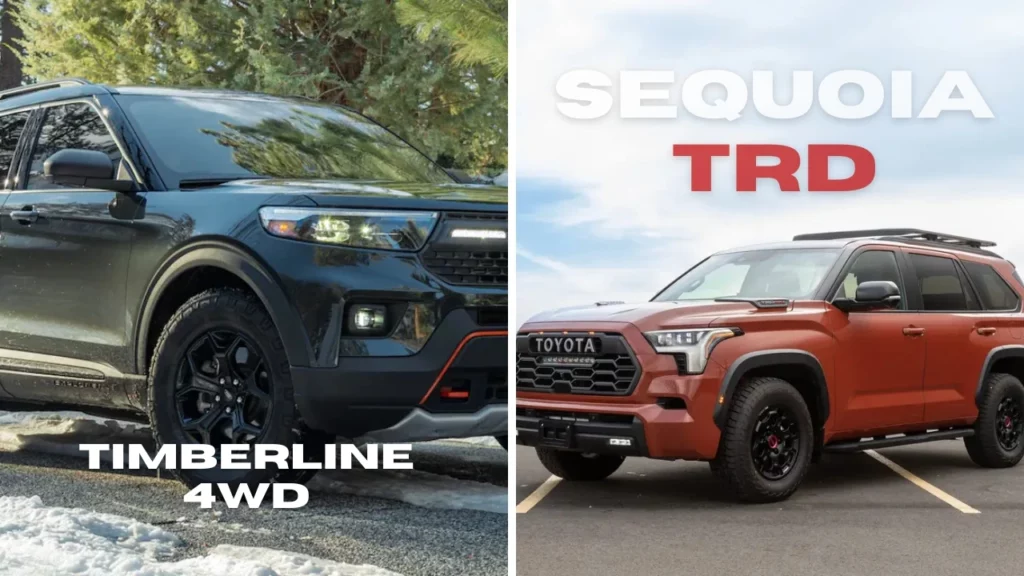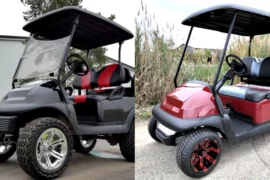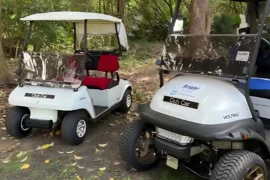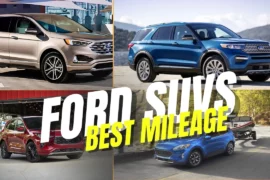When it comes to tough and adventure-ready SUVs, the Toyota Sequoia TRD Pro and the Ford Explorer Timberline often make it to the top of the list for American drivers.
Both vehicles come with higher ride heights, impressive off-road styling, all-terrain tires, bold styling, and top-tier features that promise strength and dependability.
But does the Sequoia’s 437 hp hybrid setup really make it stronger than Ford’s off-road-focused Timberline trim? Which one truly delivers more muscle when it counts?
Let us break it down and see which of the two you should buy.
Key Takeaways:
- Sequoia packs 437 horsepower and hybrid torque.
- Timberline suits daily drives and light trails.
- Sequoia is truck-built, Timberline is car-like.
- Hybrid Sequoia saves more fuel on long trips.
- Unmatched off-road strength and space in Sequoia.
Toyota Sequoia TRD Pro vs Ford Explorer Timberline 4WD
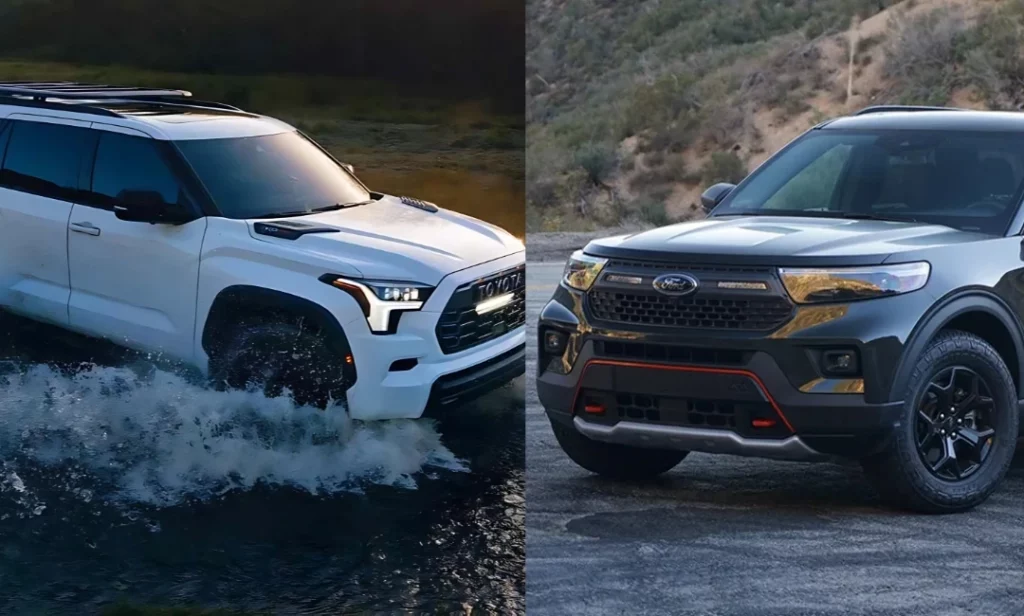
The 2025 Sequoia TRD Pro and Explorer Timberline are built for individuals and families who want comfort driving on the highway but also seek the confidence to hit the trail without hesitation. Whether it is a camping trip, towing a boat, or just handling a rough winter road with ease, they want it all.
The Sequoia TRD Pro is a full-size, truck-based SUV known for brutal strength. While the Explorer Timberline is a midsize crossover built for light off-roading.
If you ask me, both these SUVs look capable on the surface. But here, it is not about the size. It is about the capability, value, and long-term usefulness, especially for drivers who frequently tow, camp, or explore beyond the paved roads.
Key Specs Comparison
| Specifications | Toyota Sequoia TRD Pro | Ford Explorer Timberline 4WD |
| Engine | Hybrid Twin-Turbo | 2.3L EcoBoost I-4 |
| Horsepower | 437 hp | 300 hp |
| Torque | 593 lb-ft | 310 lb-ft |
| Drivetrain | Full-time 4X4 with TRD-tuned FOX suspensions | Intelligent 4WD with off-road tuning |
| Transmission | 10-speed automatic | 10-speed automatic |
| Seating Capacity | 7 Passengers | 7 Passengers |
| Towing Capacity | Up to 9,520 lbs | Around 5,300 lbs |
| Ground Clearance | 9.1 Inches | 8.6 Inches |
| Dimensions | 208.1” L x 79.6” W x 74.6” H | 199” L x 78.9” W x 70.2” H |
| Body-on-Frame SUV | Yes (based on Tundra platform) | No (unibody crossover design) |
| Off-Road Enhancements | Skid plates, crawl control, TRD tuning | Skid plates, limited-slip differentials, AT tires |
| Cargo Capacity | Behind 3rd row: 22.3 cu.ft. Maximum: 86.9 cu.ft. | Behind 3rd row: 18.2 cu.ft. Maximum: 87.8 cu.ft. |
| Wheelbase | 122 Inches | 119.1 Inches |
| Curb Weight | 6,150 lbs | 4,437 lbs |
Comparing the Strength
The Sequoia TRD Pro with its hybrid powertrain is significantly more powerful than the Explorer Timberline, especially under demanding conditions. As soon as you press the gas, it just goes without any hesitation. It does not matter whether you have passengers, ample luggage, or a trailer hauling in the back; it gives you a smooth and confident driving experience. This one never seems to run out of breath, a statement Kelly made after her drive.
By comparison, the Explore Timberline feels more like a strong weekend hiker. It can easily handle everyday driving demands just fine and does not feel underpowered in any manner. However, when loaded up or trying to head up on Colorado’s mountain roads or merging onto a fast-moving highway with gear in the back, this one may need to catch its breath for a second.
Which SUV handles rough roads better?
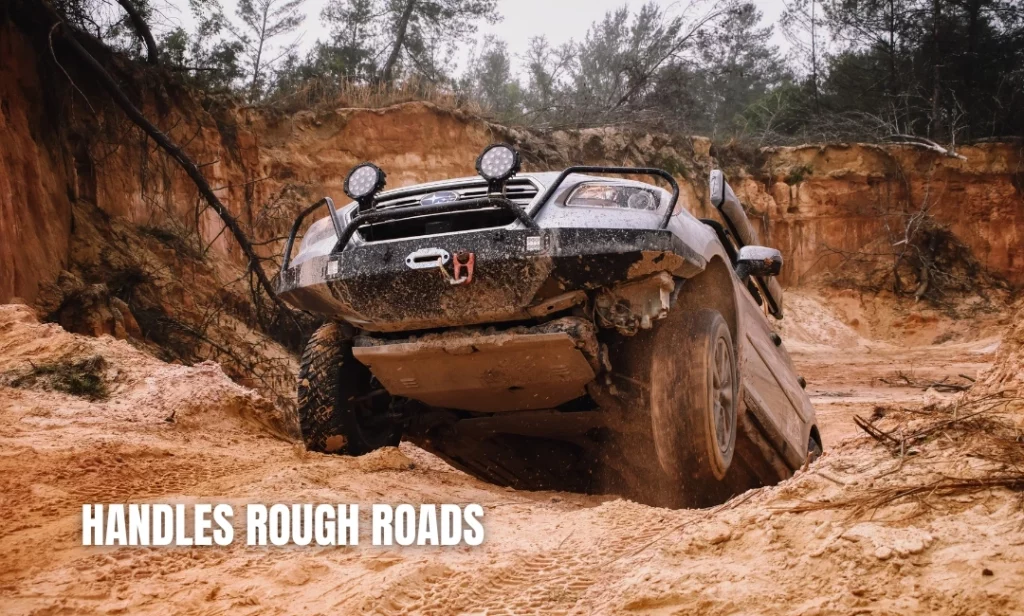
Both these capable SUVs can handle dirt roads, gravel, mud, puddles, and snow well, but they do it differently. Where the all-new Sequoia TRD Pro feels like wearing hiking boots with ankle support, the Timberline 4WD is more like wearing trail sneakers.
Sequoia is sturdy, built to grip, and has no problem driving over ruts or rocks. You get things like underbody protection, special shocks that absorb rough terrain, and full-time 4×4 mode with a locking feature that feels planted even when things get rough. You can drive it on intermediate to advanced off-road trails like Imogene Pass and more.
Timberline, with its intelligent four-wheel-drive system, is a good choice for most paths. It is comfortable and grippy, but when it comes to serious rock crawling, this one is not your friend. It is a more suitable option for state parks like Switzerland Trail and forest roads than for deep backcountry trails.
Breaking Down the Towing Power Differences
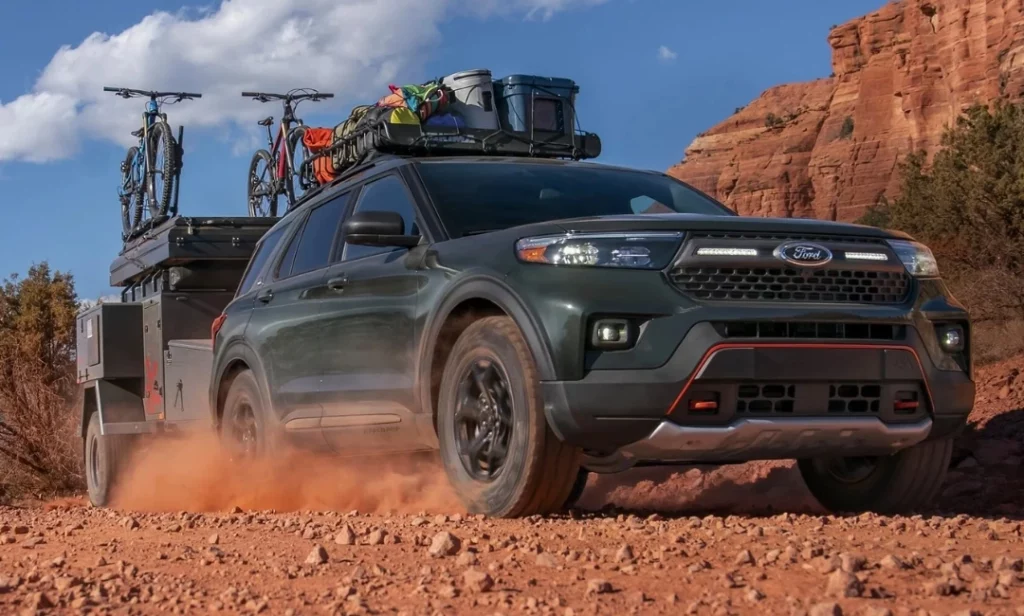
If you plan on towing a big camper, boat, or even a trailer with ATVs or tools, the Sequoia is the right one for you. This Japanese vehicle is built on a truck platform and actually feels like it. Towing with it feels steady and in control. Whether you are towing or hauling heavy loads while cruising on highway or mountain roads, you get that much-needed stability and confidence.
On the contrary, Ford’s beloved SUV, Explorer Timberline, is quite modest. This one is not as brute as the former and is ideal only for smaller trailers, jet skis, lightweight campers, and other similar items. The more weight you add to this one, the more you will feel it struggling to keep up. To be completely honest, this one simply can not match Sequoia’s hauling strength.
Understanding the Fuel Economy
If efficiency is the parameter, TRD Pro, despite its bigger proportions, is more efficient. Its smart hybrid powertrain helps it stay surprisingly better on gas for its size. It does not matter how frequently you go highway driving or long family road trips; this one will not guzzle down fuel like traditional gas engines, which are becoming a headache in current times of escalating fuel prices.
The Timberline 4WD is lighter and more efficient for daily commutes. However, during the longer trips and heavy duty towing, you can see the mileage dropping pretty fast.
In everyday driving, both vehicles are reasonable and deliver what you may want from a large vehicle. But if your preference lies in wanting power without frequently stopping for refueling, the Sequoia’s premium hybrid tech pays off.
Interior Space and Comfort

You get up to 7 passenger seats across these three-row SUVs. But in terms of interior space and comfort, Toyota takes the lead over Ford. The Sequoia TRD Pro gives you more leg and elbow room, especially in the third row and cargo area. This one is designed for large families and individuals who carpool a lot, take frequent long road trips, or carry ample outdoor gear. The cabin is open and wide and does not suffocate you even at its full capacity.
The Explorer Timberline is smaller, but that does not undermine its potential. It comes with bench seats for second and third rows and is quite comfortable. There is enough space for everyday use, and best suited for American families with younger kids, couples, or drivers who rarely use the last row. For anyone who wants adventure capability in their next SUV but does not wish for bulkiness, this is the one.
Is TRD Pro Worth the Higher Price?
The Sequoia TRD Pro comes with a hefty price tag of around $80,295, which is a lot higher than the $49,330 of the Timberline 4WD. Surely, it is way expensive for many car buyers, but concentrate on the fact that you are getting:
- A full-size power,
- Serious off-road muscle, and performance,
- Advanced hybrid technology,
- Toyota’s reputation for long-term reliability,
- One of the best SUVs in its class.
Meanwhile, the Timberline 4WD offers excellent value for its price. It impressively blends utility with style. It is not only affordable upfront but also easier to manage in urban environments. If you want to enjoy weekend adventures but do not wish to commit to a large vehicle, this one is a smart, budget-conscious choice.
If brutal strength is your key desire, the TRD Pro is worth every penny. And if you want good capability without the burden of size and handling, opt for Timberline 4WD.
Frequently Asked Questions
Is Sequoia good for daily use?
It is great to drive on open roads and highways. However, it is big for tight and crowded parking lots. It is best for people who seriously need big riding space and have ample parking space at home.
Does Timberline offer a hybrid model?
No. The Timberline trim only comes with a gasoline engine. Ford does offer hybrid variants in the Explorer model lineup, but not in this version.
Which SUV has better resale value?
In the U.S. market, Toyota Sequoias, especially the TRD trims, tend to hold their value well. They are known for their long life and fewer issues over time, making them popular in new and used car markets.
Can Timberline handle rocky trails?
Yes, but it is more suited for snow, gravel roads, and moderate trails. It’s not built for extreme rock crawling or deep mud.
Final Take on TRD Pro vs Timberline
Out of the two, the right choice primarily depends on your needs, like how and where you plan to drive. If you plan on towing heavy loads, tackling off-road terrain frequently, or need a true long-distance driving partner, the Toyota Sequoia TRD Pro is the stronger and more capable sport utility vehicle. It is powerful, quiet, and eco-friendly.
But if your lifestyle is more urban-based with occasional road trips or trail exploration, the Explorer Timberline makes better sense. It’s strong enough, easier to park, less expensive to maintain, and delivers when you need it.

